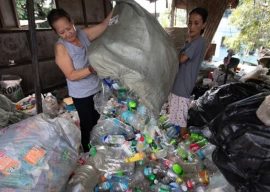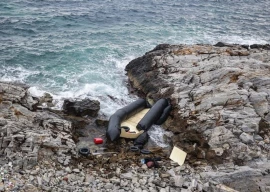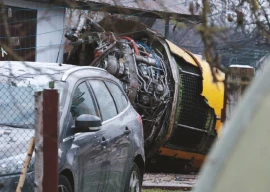
India has been on the defensive following the March 27 test that NASA branded a "terrible thing" that had created new dangers for astronauts aboard the International Space Station.
"The mission had been designed in an away that debris decays very fast and that minimal debris goes up," G. Satheesh Reddy, head of India's Defence Research and Development Organisation told reporters.
"There was a risk for 10 days and we have crossed that period," he told a press conference.
"As per our simulations, there were no possibilities of hitting the International Space Station with debris from the satellite," he added.
India 'successfully' test-fires two Quick Reaction Surface-to-Air missiles
NASA chief Jim Bridenstine last week condemned India's destruction of the satellite as a "terrible thing" that created 400 pieces of orbital debris, or "space junk".
The danger from "space junk" is not that it falls to Earth but that it collides with orbiting satellites.
Even the smallest piece of debris travelling at great speeds can put a satellite out of action.
The Indian satellite was destroyed at a relatively low altitude of 300 kilometres (180 miles), 120 kilometres below the ISS and most orbiting satellites.
Pakistan successfully test-fires surface-to-surface ballistic missile ‘Nasr’
Bridenstine and other space experts also said the risk from the Indian debris would dissipate as much of it would burn up as it entered the atmosphere.
The US military tracks objects in space to predict the collision risk for the ISS and satellites. They are currently tracking 23,000 objects larger than 10 centimetres.
These includes about 10,000 pieces of space debris, of which nearly 3,000 were created by a Chinese anti-satellite test.
India has hailed the test as a sign that it is a space power. Only the United States, Russia and China had previously carried out successful anti-satellite missile strikes in space.



1723032398-0/BeFunky-collage-(36)1723032398-0-165x106.webp)













COMMENTS
Comments are moderated and generally will be posted if they are on-topic and not abusive.
For more information, please see our Comments FAQ